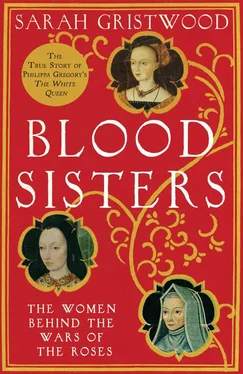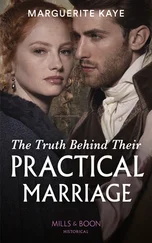For Elizabeth of York had been one of London’s own. Her mother Elizabeth Woodville had been the first English-born queen consort for more than three centuries, but where Elizabeth Woodville had been in some ways a figure of scandal, her daughter was less controversial. She had been a domestic queen, who gave money in return for presents of apples and woodcocks; and bought silk ribbons for her girdles, while thriftily she had repairs made to a velvet gown. Elizabeth rewarded her son’s schoolmaster, bought household hardware for her newly married daughter, and tried to keep an eye out for her sisters and their families. The trappings of the hearse showed she was a queen who had died in childbirth, a fate feared by almost every woman in the fifteenth century.
She had been, too, a significant queen: the white rose of York who had married red Lancaster in the person of Henry VII and ended the battles over the crown. Double Tudor roses, their red petals firmly encircling the white, were engraved and carved all over the chapel where she would finally be laid to rest.
The records describe how on her death Henry ‘took with him certain of his secretest, and privately departed to a solitary place to pass his sorrows and would no man should resort to him but such his Grace appointed’; leaving behind orders ‘for 636 whole masses’ to be said. ‘Also then were rung the bells of London every one, and after that throughout the Realm with solemn dirges and Masses of Requiems and every Religious place, colleges, and Churches.’ The loss of his queen was ‘as heavy and dolorous to the King’s Highness as hath been seen or heard of’. It was the end of the partnership which had given birth to the Tudor dynasty.
Elizabeth had been at the Tower when she ‘travailed of child suddenly’ and was there delivered on Candlemas Day of a baby daughter who may have come prematurely. The records of her own Privy Purse expenses show boatmen, guides, horses sent suddenly to summon a doctor from the country; linen purchased to swaddle a new baby who would outlive her mother only by days. ‘And upon the 11th day of the said month being Saturday in the morning, died the most gracious and virtuous princess the Queen, where within the parish church of the foresaid Tower her corpse lay 11 days after.’
Mourning garments were hastily ordered for her ladies, and while these were being prepared they put on their ‘most sad and simplest’ clothes. Elizabeth’s body would, immediately after death, have been disembowelled; prepared with spices, balm and rosewater; tight wrapped in waxed cloth. ‘60 ells of Holland cloth … likewise gums, balms, spices, sweet wine, and wax, with which being cered, the king’s plumber closed her in lead’, before the body was placed in a wooden chest, covered in black and white velvet with a cross of white damask. On the Sunday night the body was ready for removal to the chapel. The queen’s sister Lady Katherine Courtenay acted as chief mourner at the requiem mass, a ritual repeated daily as long as the body lay in the Tower.
It was Wednesday 22 February when the coffin was placed on a bier covered in black velvet and drawn by six horses, themselves decked in black. The cushions of black velvet and blue cloth of gold must have helped secure the coffin in place, and helped the gentleman ushers who knelt, braced against the horses’ motion, at either end of the moving construction. Above the coffin was an effigy of the queen, clothed in ‘the very Robes of Estate’, with her hair about her shoulders and her sceptre in her right hand. The funeral effigy of a royal personage symbolised the dual nature of a king or queen; the immortal office and the mortal body.
The banners at the corners of the bier were painted on a white background, to show this was the funeral of a woman who died in childbed, while behind the bier came the ladies of honour, each mounted on a palfrey; the chariots bearing other senior ladies; a throng of servants and citizens of London. In front of the bier went the choirs, and the English and foreign male dignitaries. Companies of foreign merchants – French, Spanish, Venetian – bearing their country’s arms stood among the crafts guilds and fellowships of London who held thousands of torches along the way. Bells rang, choirs sang, and incense scented the cold air from each parish church as the body passed by. From the Tower to Temple Bar; to Charing Cross and then on to Westminster; the same route that had been taken for Elizabeth’s coronation.
In the churchyard of St Margaret’s, where the peers ‘took their mantles’, the body was once again censed and then borne into the Abbey shoulder high. There it rested while, after the service, the Dirige, conducted by the abbot and nine bishops, Lady Katherine, escorted by her nephew the Marquess of Dorset and by the Earl of Derby, led the lords and the ladies to a supper of fish in the Queen’s Great Chamber. Watched that night by her ladies and men of all ranks, lit by hundreds more heavy tapers, Elizabeth’s corpse waited for the next day. Body and soul could not be left unprotected through the dark night hours: each one of those tapers might serve to drive a demon away.
The long list of services offered for the dead woman reflects the importance of the church rites in the daily life of the fifteenth century. Lauds were said at six the next morning, followed by Our Lady’s Mass at seven; the Mass of the Trinity; and then the Requiem Mass. As the ceremony came towards its close the mourners, in order of precedence, laid lengths of rich fabric across the effigy. The blue and green, the bright strands of metal in the weave, must have stood out against the funereal scene. After the sermon the ladies left, for men to do the real physical work of burial. The queen’s chamberlain and ushers broke their staves of office and cast them into the grave with ritual tears, in token that their service to Elizabeth of York was ended. Perhaps the emotion was real – Elizabeth had been a gentle mistress, and loyal to those who served her and family.
Following the funeral alms were given to ‘bed-rid folks, lazars, blind folks’; to churches, to hospitals, to charitable foundations. And, with more than 9000 yards of black cloth coming out of the Great Wardrobe, King Henry had handed out ‘the greatest livery of black gowns that ever was seen in our day’. Her funeral had cost some £3000; twice that of her father, and five times that of her eldest son. Henry must indeed have loved Elizabeth, even though in the political sphere his concern had been to avoid any suggestion that it was from her bloodline that he derived his legitimacy.
The funeral had been – as was customary for a female corpse – a predominantly female ceremony; partly because the one mourned was a woman; partly because concern for the dead was always firstly a female duty. But Elizabeth’s mother-in-law, Lady Margaret Beaufort, was absent. Instead, she occupied herself in laying down a set of ordinances for royal mourning to be used for future deaths – costume and comportment, prescribed precisely, ‘apparel for princesses and great estates’, moving down the scale in their order. A queen was to wear a surcoat with a train before and behind; the king’s mother (though Margaret was technically only a countess) was ‘to wear in every thing like to the queen’. It was often said that Margaret’s concern for rank and dominance came between her and Elizabeth; if so, they were not the only mother-in-law and daughter-in-law in this story to have had problems.
Elizabeth Woodville – the beautiful widow who had captured the heart of King Edward IV – had been bitterly resented by Edward’s mother Cecily Neville. Cecily had been the matriarch of the Yorkist clan, mother also to Richard III; just as Margaret Beaufort was a leader of the Lancastrians – another mother of kings who could never quite forget that Fortune had snatched her own queen’s crown away. Cecily’s daughter Margaret, too, was living in Burgundy, but as the sister of two Yorkist monarchs she never lost her urge to take a hand in the affairs of England.
Читать дальше












